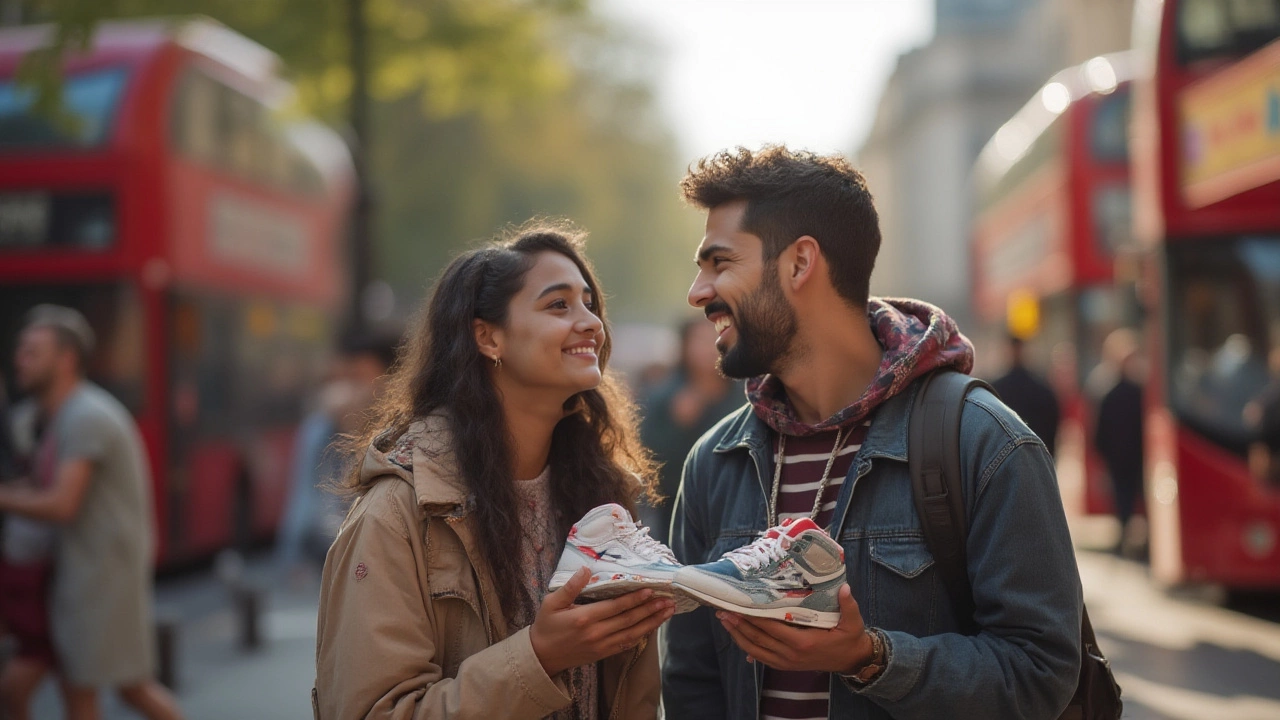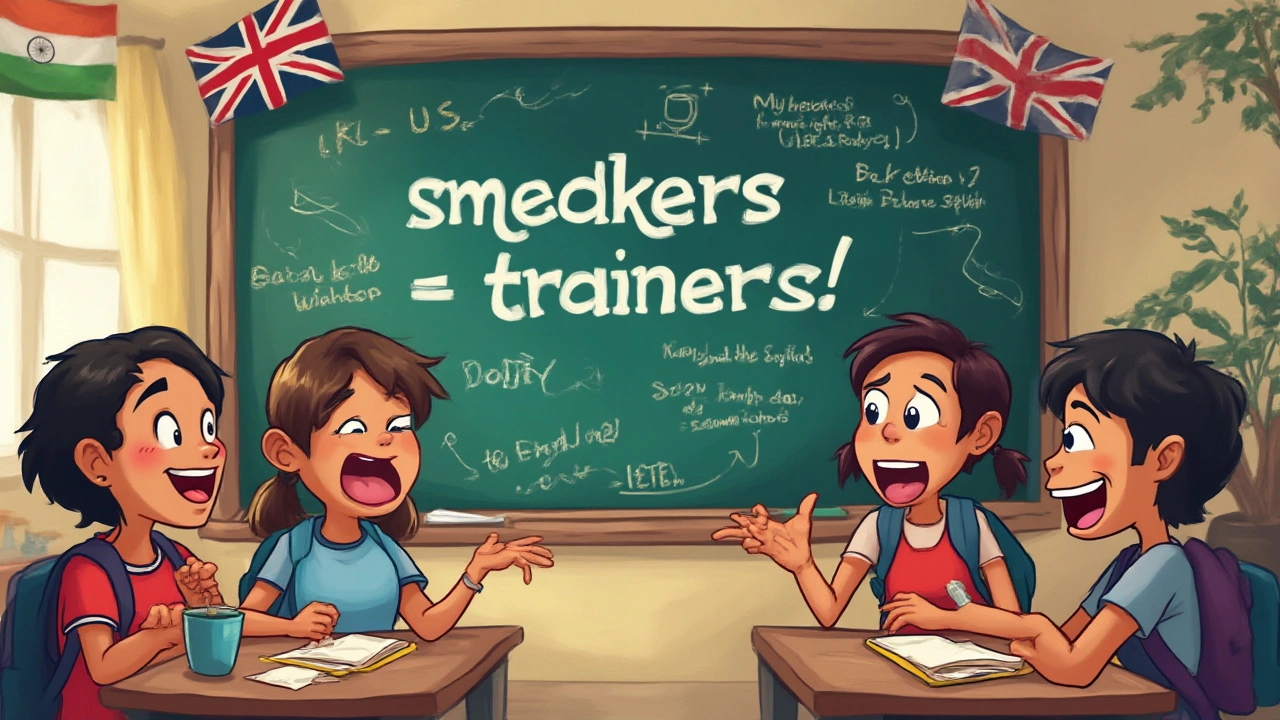British Word for Sneakers: What Do Brits Call Sneakers?

Ask any American to name a comfy shoe you wear for running or walking, and you’ll get “sneakers.” Say “sneakers” across the pond, though, and you might get a confused look—or a polite correction. British and American English like to bicker over bagging groceries vs. bagging a degree, but shoes? The differences sneak up on you. The British word for sneakers is a classic example of how language highlights deeper quirks between two cultures. Ever notice how each side claims it speaks ‘proper’ English but then ends up with a wardrobe full of “jumpers,” “wellies,” and “pants” that don’t mean the same thing?
From Sneakers to Trainers: What's in a Name?
So, what’s the British word for sneakers? Most people in the UK call them trainers. While Americans picture someone who trains you when they hear “trainer,” Brits picture athletic shoes. Urban legend says that “sneaker” caught on in the U.S. in the late 1800s because soft rubber soles let you sneak around quietly. In Britain, “trainer” comes straight from the idea of going to train or exercise—which honestly makes more sense. Even famous brands tweak their lingo for British markets. Nike or Adidas will sell you “trainers” in London and “sneakers” in New York, even though it’s the same shoe. Not sold yet? Flip through a UK catalog, and you might spot “running shoes” for actual runners, but “trainers” remains the catch-all for your everyday Nikes, Adidas, or bargain-bin specials at Sports Direct.
There’s even more to it. The word “trainer” also branches off. If you’re buying shoes for school PE classes, you’ll sometimes hear “plimsolls”—basically a lightweight, simple version of trainers, usually with a canvas upper and thin rubber sole (they even have a nickname: "plims"). In Scotland, you might hear “gutties” or “sannies.” In Northern Ireland, “daps,” and for some Liverpudlians—yes, “trainees” or “gym shoes.” It’s a whole subculture. Parents cringe as teens covet “designer trainers,” and British tabloids hype celebrity feet in limited-edition kicks—though “kicks” itself is a newer, imported word trickling in but not nearly as embedded as trainers.
How British and American Shoe Words Change Meaning
It gets funnier when ordinary words turn out to mean wildly different, even embarrassing things on either side of the Atlantic. Take “pants.” If you ask for “pants” in a UK store, you’ll get sent to the underwear section. Where Americans might say “sneakers and pants,” a Brit would more likely pair “trainers and trousers.” Then, there’s “vest.” In the US, it’s a sleeveless top you wear over shirts—a formal touch. In the UK, a “vest” slips under your shirt for extra warmth, a tank top, or what your granddad wears to bed. Shoes aren’t spared: “wellies” in the UK are Wellington boots (rubber rain boots), while “flip-flops” keep their name, but some in northern England might call them “thongs”—not to be mixed up at the beach, trust me.
Even “sneakers” itself is a culture clash. A 2022 footwear industry report showed that “trainers” accounted for over 80% of references to athletic footwear in UK print media, while “sneakers” led in US articles by a similar margin (see table below). TV shows, movies, and even YouTube stars keep these word divides alive. If you binge-watch British reality TV, keep count of the times “trainers” pop up. You’ll hear celebrities moaning about muddy trainers or bragging about scoring rare “colourways,” never once using “sneakers” unless they’re referencing American culture.
| Country | Common Word | Usage Percentage |
|---|---|---|
| UK | Trainers | 82% |
| USA | Sneakers | 85% |
| Australia | Runners | 65% |

More Than Just Shoes: Culture, Fashion, and Social Status
It’s wild how much status and identity is tied to your choice of trainers. In Britain, brands and styles rank you—are you an Adidas “Samba”-wearing football fan, a Nike Air Max collector, or a lover of retro “Gazelles”? Owning exclusive trainers is often a flex, especially among teens and twenty-somethings—plus older sneakerheads (yes, that word travels, but it’s still niche in Britain). Meanwhile, “school shoes” have their own strict dress codes. Most UK schools want classic black leather shoes for the classroom but turn a blind eye to battered “trainers” out on the playground. Some schools—even today—ban trainers outside of PE entirely, sparking debates and headlines about self-expression and class distinction.
Don’t forget sports. In America, “sneakers” are paired with basketball, hip-hop, skateboarding. Over in the UK, “trainers” are the default for footie, gym, and, for many, just setting out for a walk to the “offie” (that’s a shop selling alcohol). Some collect new “trainers” just to keep on the shelf, never to be worn. The appeal? Exclusive collabs, rare colorways, celebrity designs. UK-based influencers help fuel this obsession—sometimes sparking overnight queues outside shops or “raffles” for limited editions. In 2023, an ultra-rare collaboration between Adidas and Liam Gallagher (yup, the Oasis singer) saw trainers sell out before most people sipped their first espresso. Lots of collectors keep the boxes pristine—imagine having more money in unworn trainers than in your bank account!
Tips for Navigating the British vs. American Shoe Lingo
If you’re an American in Britain, asking where to buy sneakers could earn a blank stare. Here are some tips to blend in (or at least avoid awkward silences at the shoe shop):
- Say “trainers” instead of “sneakers.” If you’re talking sport, both “trainers” and “running shoes” work.
- School shopping? Look up “plimsolls” for PE, but “trainers” for anything sporty outside school.
- Don’t mix up “pants” (UK means underwear) and “trousers” (UK for what Americans call pants).
- Notice regional quirks: “gutties” (Scotland), “daps” (Wales, Southwest England), “sannies” (some parts of Scotland).
- For rain boots, just say “wellies.”
- Packing for Wimbledon? White tennis shoes are just “trainers” if you’re chatting with locals.
Think about why this matters. Language reflects culture, and these playful differences can break the ice or trip you up. Brits swear by their queues and their “trainers.” Americans line up for “sneakers drops.” Growing up in England, I saw older cousins save their birthday money to buy the latest “trainer” fad, then worry their schoolyard cred depended on keeping them spotless. Some communities even have family traditions—“first real trainers” as a rite of passage, usually a pair picked during a special shopping trip with mum or dad. The words aren’t just labels—they carry a whole bundle of memories and social currency.
Shoe language can also trip up non-native English speakers. Imagine a student from Germany, where “Turnschuhe” covers trainers and sneakers alike, suddenly forced to pick the ‘right’ English term based on a postcode or school uniform list. Even though “sneakers” is catching on with some young Brits (thanks to memes, Netflix, and TikTok trends), no one mistakes “trainers” for old-school gym teachers—unless you’re lost in translation. British English isn’t frozen in time. Maybe in a few decades, “sneakers” will sneak into everyday use, but for now, “trainers” rule the shoe rack in the UK. Next time you visit, try it out and see who smiles at your accent from across the shop floor.
- Jul, 4 2025
- Violet Greenfield
- 0
- Permalink
- Tags:
- British word for sneakers
- sneakers vs trainers
- UK vs US English
- British footwear terms
- what are sneakers called in England
Written by Violet Greenfield
View all posts by: Violet Greenfield